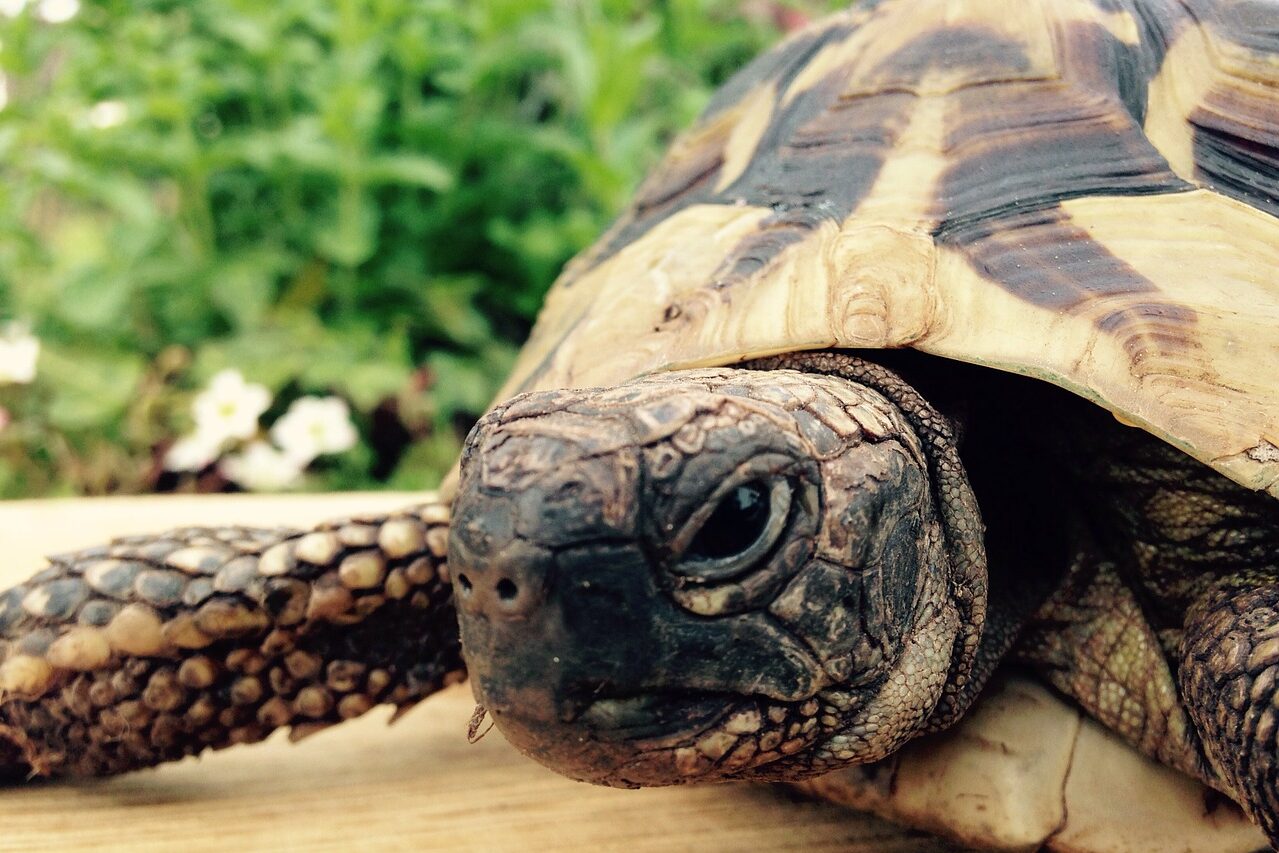A Yellow Turtle That Looks Like Melted Cheese Has Been Discovered
In India, an albino turtle has been discovered with a bright yellow-orange color that looks remarkably like melted cheese.
This article is more than 2 years old

In West Bengal, India a local farmer named Basudev Mahapatra found a rare creature while working his fields in the village of Sujanpur. The species, an Indian flap shell turtle, is not rare, but what makes Mahapatra’s yellow turtle so unusual is that it’s an albino. In this species being an albino gives it a bright yellow-orange color that looks remarkably like melted cheese.
Take a look at the incredibly rare Cheese Turtle…
At first, the report came that the yellow turtle was a new species, one never seen before. But once the Sindh wildlife ministry took a look at footage of the turtle, they knew it was an albino turtle from the freshwater water turtle species Lissemys punctata, which is found in South Asia. Saeed Akhtar Balouch, a conservator with the ministry, said that the Lissemys punctata was a protected animal under the second schedule of Sindh Wildlife Protection Ordinance of 1972 and was also placed in Appendix II of the Convention on International Trade in Endangered Species of Wildlife Fauna and Flora.
When describing the yellow turtle, Balouch said, “The Indian flap shell turtle — commonly found in Pakistan, India, Sri Lanka, Nepal, Bangladesh and Burma — is known to be omnivorous and its diet consists of frogs, fishes, shrimp, snails, aquatic vegetation, plant leaves, flowers, fruits, grasses and seeds. It lives in the shallow quiet often stagnant waters of rivers, streams, marshes, ponds, lakes and irrigation canals.” The Indian flap shell turtle range from only 9 to 14 inches in size.
While this yellow turtle species is not a new one, the shocking yellow-orange color is extremely rare. Balouch says that this color comes from a congenital disorder that is mainly characterized by either the complete or partial absence of pigment in their skin, eyes, and hair. This is due to the absence of tyrosine, which is a copper-containing enzyme that is involved in the production of melanin.
“It is the opposite of melanism,” he said via Dawn. “Unlike human, other animals have multiple pigments and for these, albinism is considered to be a hereditary condition characterized by the absence of melanin particularly in eyes, skin, hair, scales, feathers or cuticle.” Wildlife biologist Sneha Dharwadkar agrees with Balouch in that the albino coloring comes from the absence of tyrosine coming from a genetic mutation or congenital disorder, which gives the yellow turtle it’s odd coloring.
The discovery of this yellow turtle is only the second on record. The first one, surprisingly, came earlier this year in Odisha, India. It can be seen below.
This second yellow turtle was thought to be between one-and-a-half to two-years-old. According to Siddhartha Pati, the executive director at the Association for Biodiversity Conservation, the turtle has been released back into the wild. “We find turtles and crabs regularly and we rescue them and release them into the water. But this is the first time in Odisha and second time in India that an albino turtle has been found,” said Pati via CTV News.
Of course, once pictures of the yellow turtle made their way across social media, the reaction was quite humorous. Indian Forest Service’s Debashish Sharma was one of the first to post pictures on his Twitter account stating, “Today a Yellow Turtle was rescued from a Pond in Burdwan, WB. It’s one kind of a rarely occuring Flapshell Turtle.”
The responses were amusing.
What’s also amazing is that these two yellow turtles were not the only recent anomaly discovered. A two-headed Spadenose shark also made an appearance when it was caught in a fisherman’s net.












